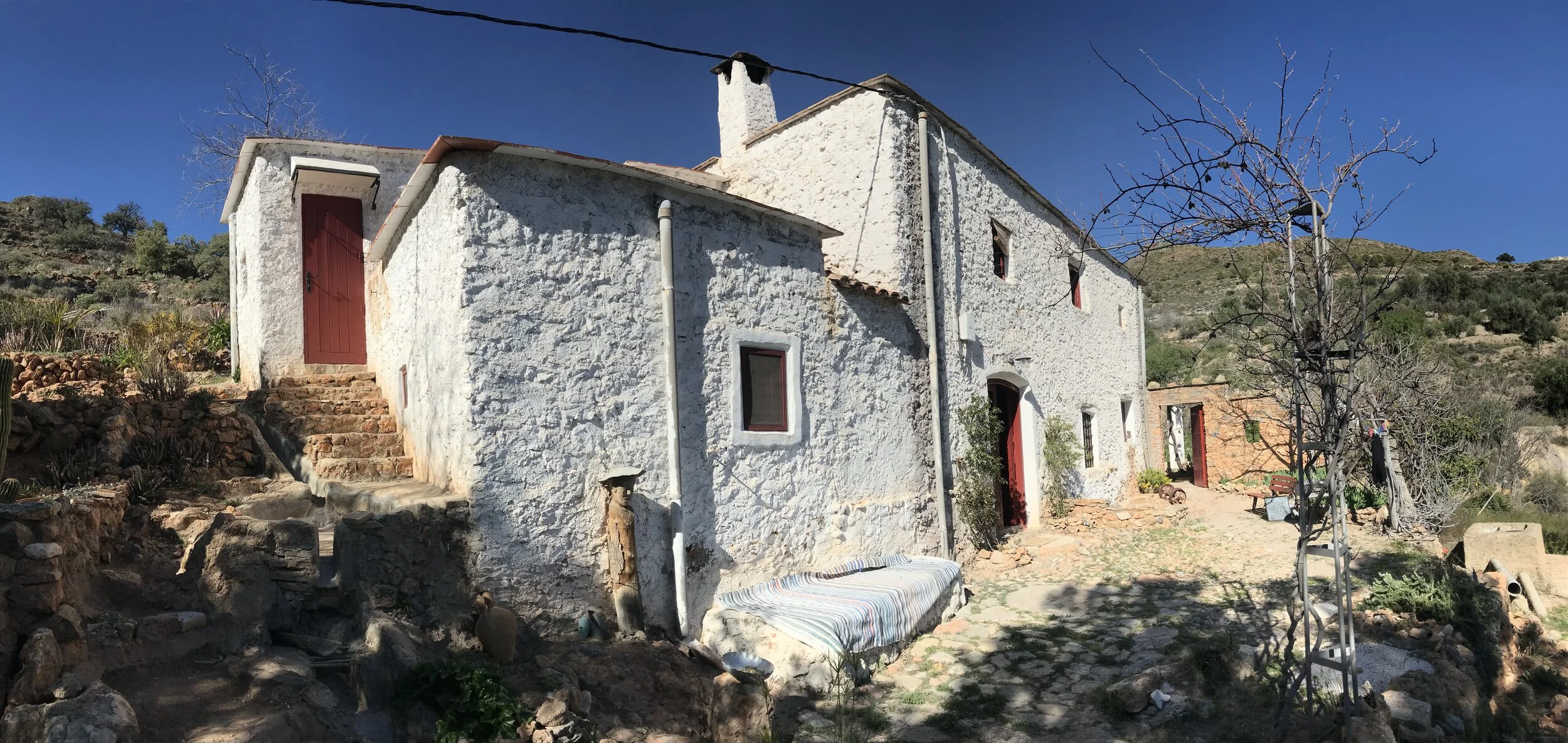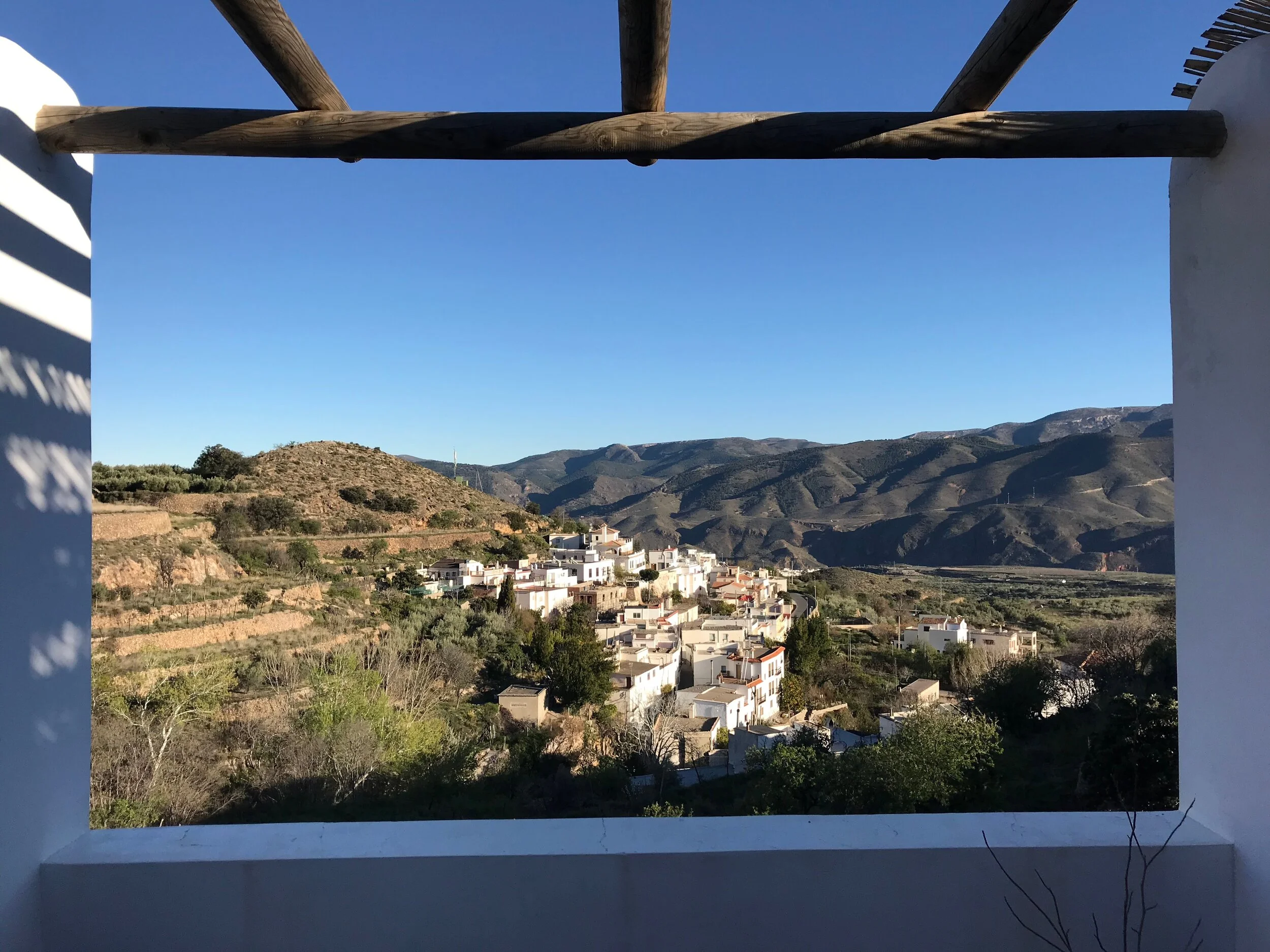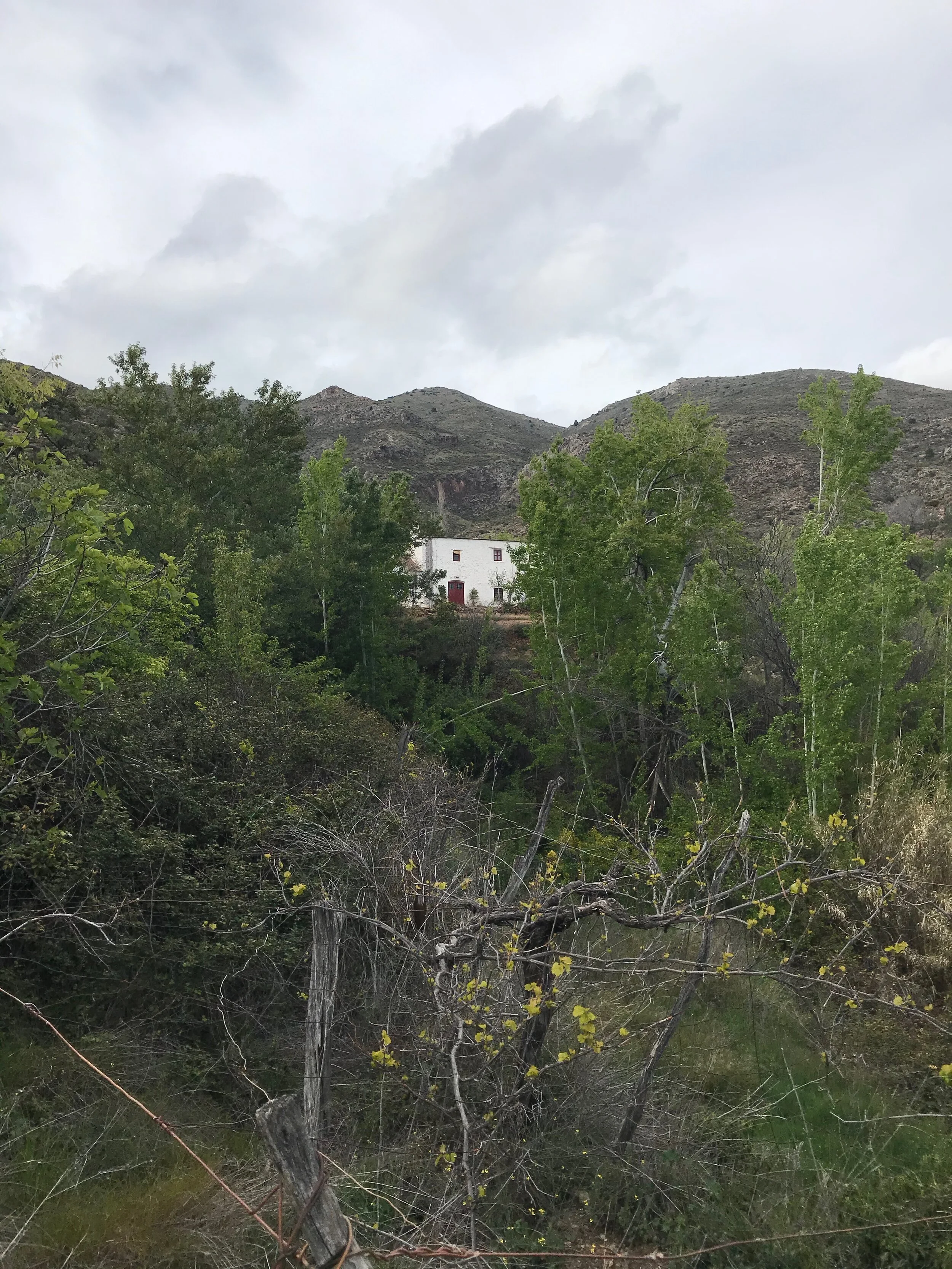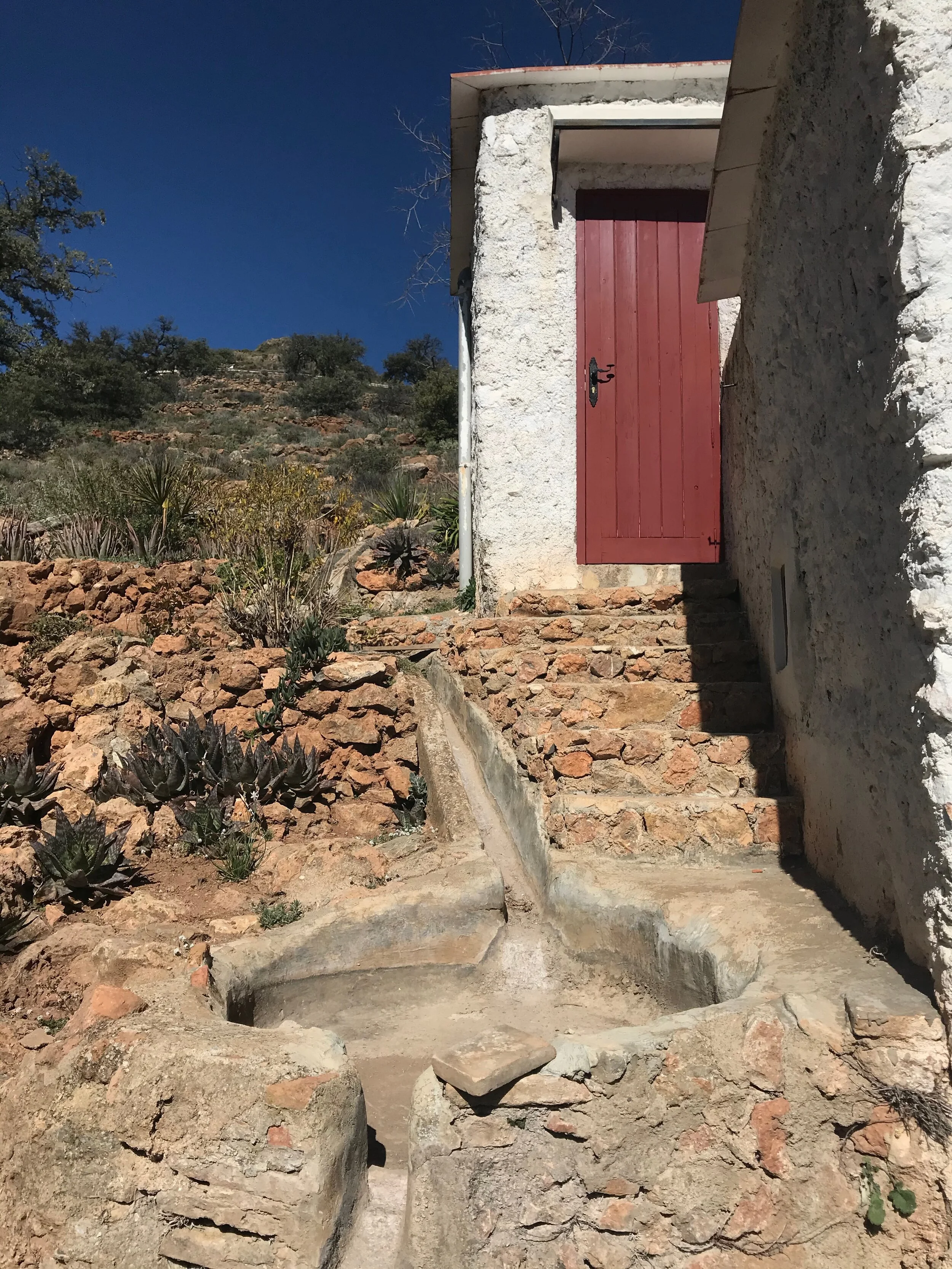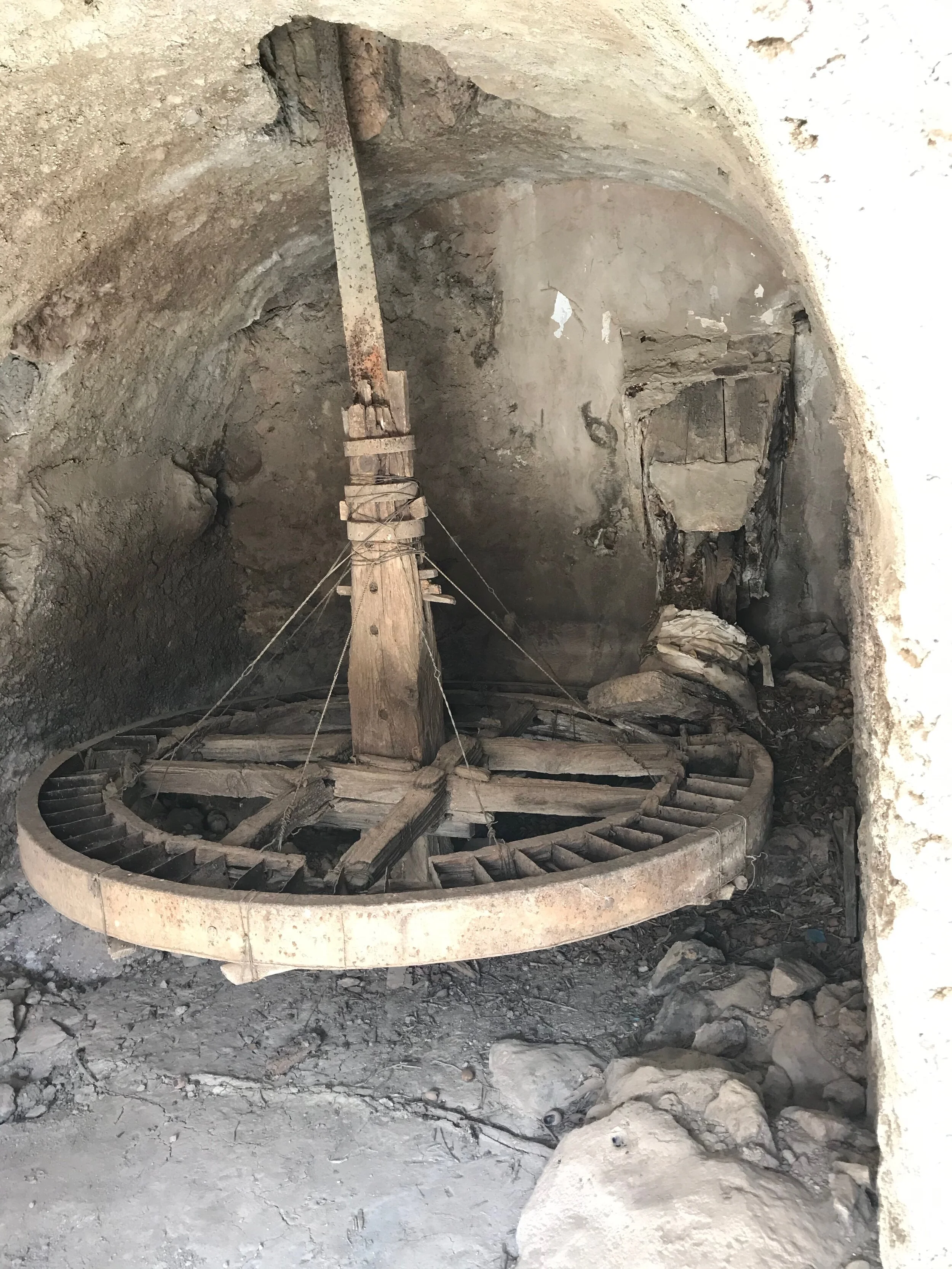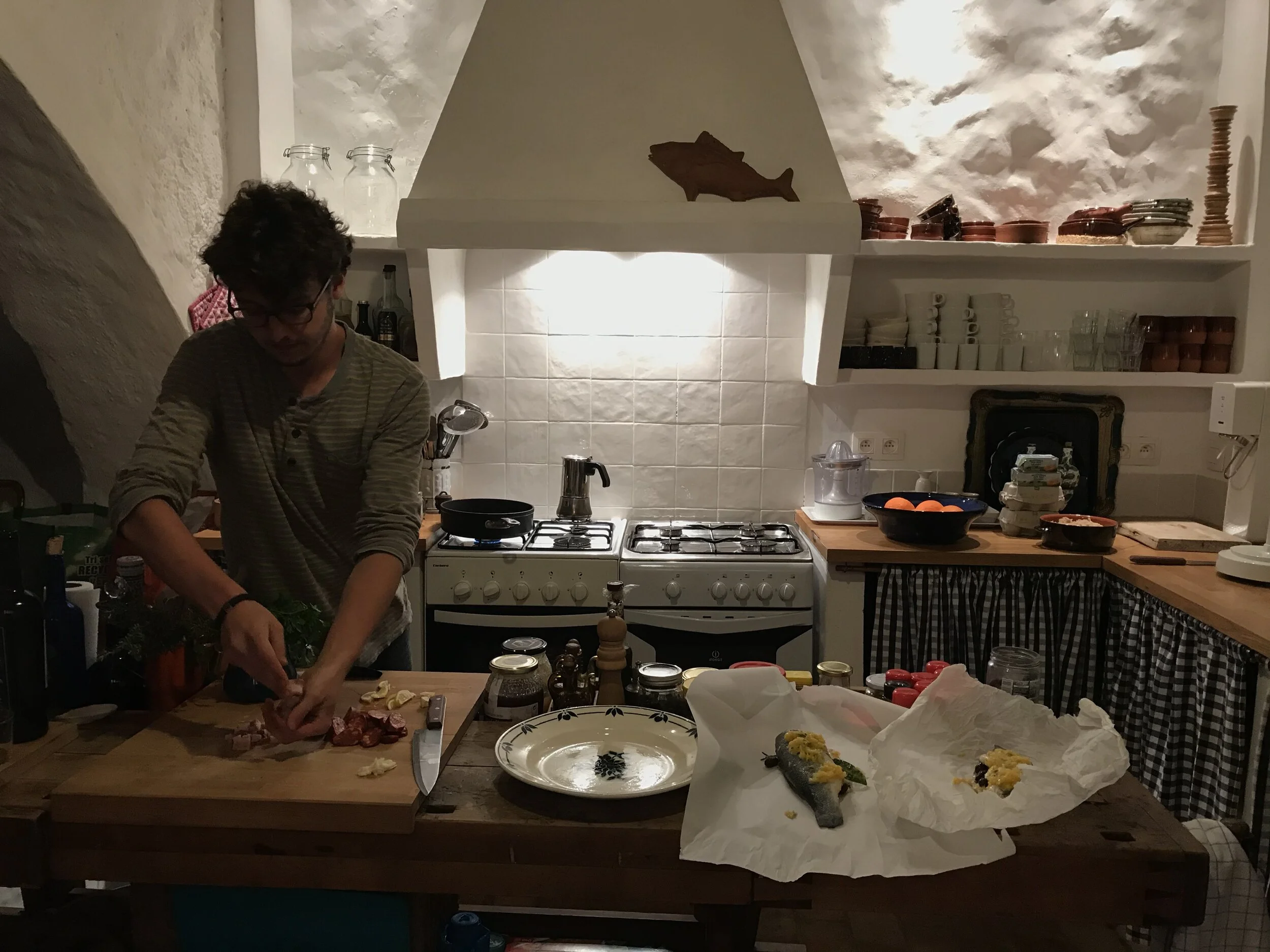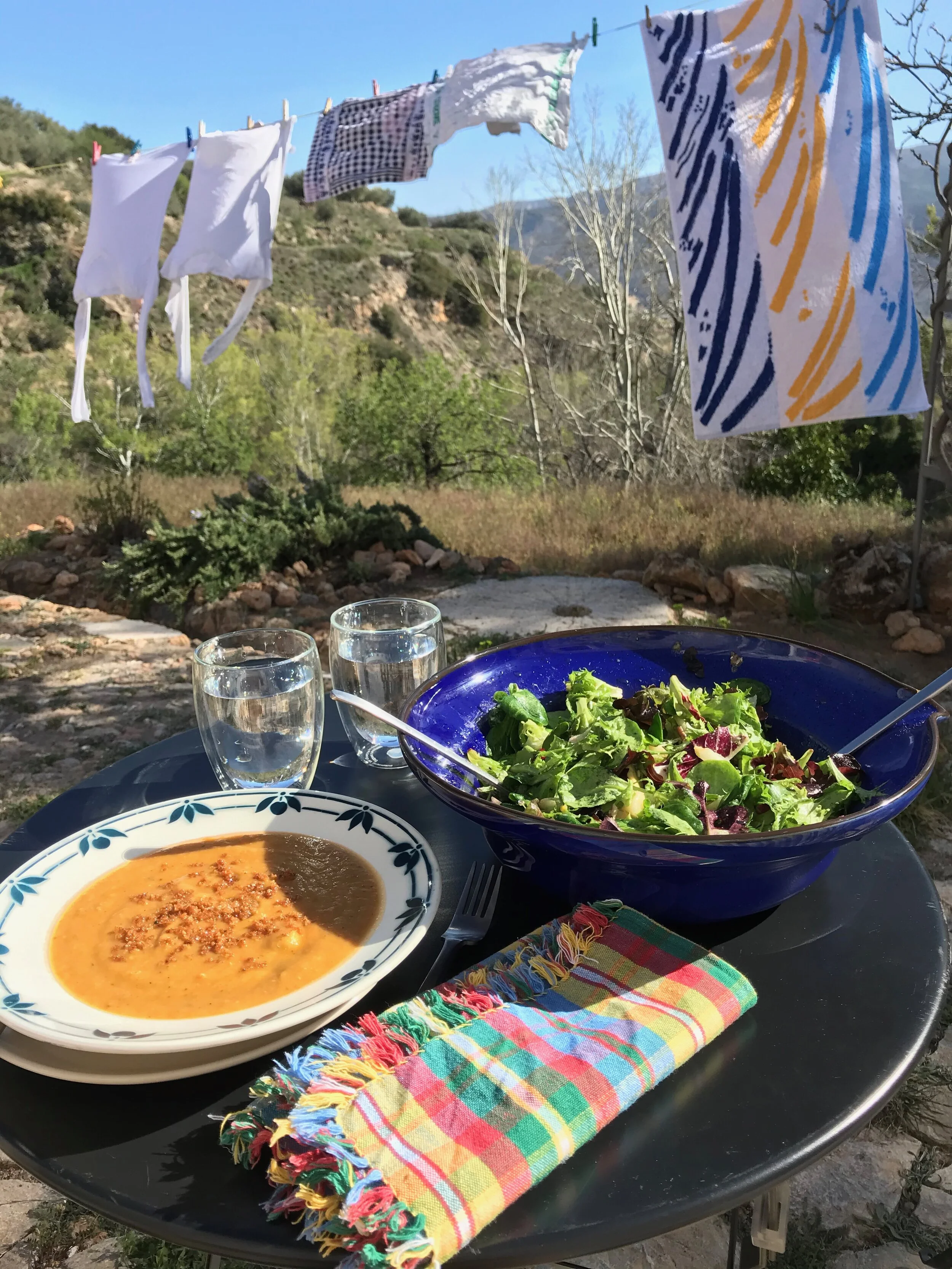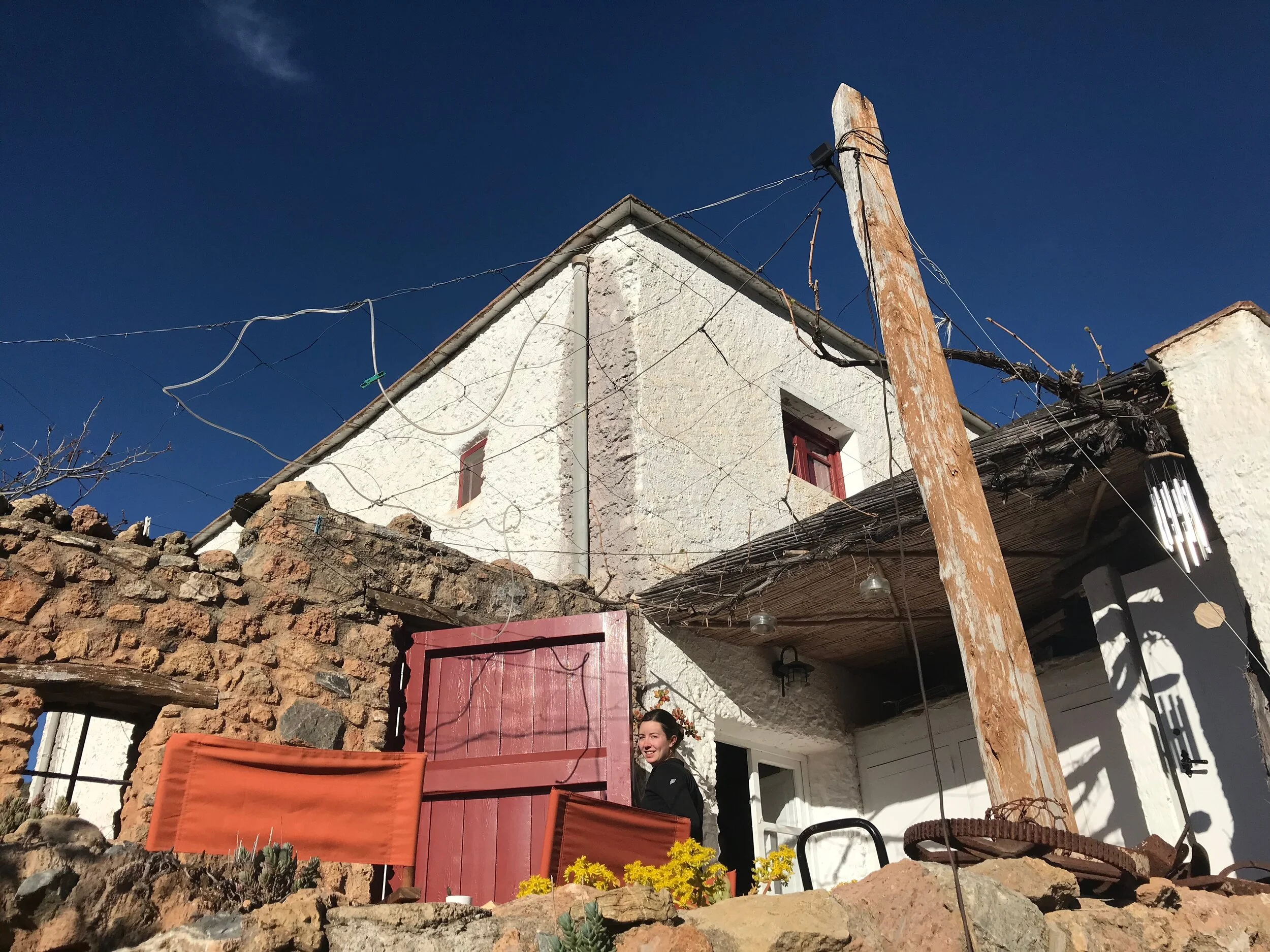To The Mountains, Part I: El Molino
El Molino, Beires, Andalucía
We’re driving along the N-340 Highway in Jodi Schad’s borrowed VW. We head east along the coast from Malaga towards Almería before eventually making a hard break north, up and into the Sierra Nevadas. Looking up from the glistening coast, the mountains appear as a painting on a backdrop. Light and distance play their tricks, smoothing hard edges and blurring light into purple shadow, the mountain’s faces and crags collapsing into one hazy plane. Only by venturing up and into them do we begin to realize their amazing depth.
Jodi, a friend and teacher at the cooking school, your favorite chef’s favorite pastry chef, can’t stop gushing. Partly because she loves this place, Andalusía and the small mountain village of Beires where she winters each year in a friend’s old stone mill. And partly because, in spite of spending most winters here for the past 5 years, she speaks no Spanish and hasn’t been able to talk with anyone since the friend who owns the mill left some weeks ago.
We pass dozens of tiny white villages and, though she can’t pronounce any of their names, she knows exactly which shops and restaurants to stop at in each for the best cheeses, wines, olive oil, and grilled sardines. And she can’t speak with the owners, but they all know her and her order well, preparing and serving their specialties and Jodi’s favorites without so much as a word. The meal concluded always with a smile, a peck on the cheek, and Jodi’s thanks: prayer hands and a slight bow, confusing the peacefulness of these mountains for those in Tibet.
About an hour and a half from the sea, beyond the foothills, past the orange-juice factories (which in 4 months time become gazpacho factories, and two months after revert back; different fruit, same equipment), and through the Dalí-esque dunes, we’re nearing Beires. It’s late in the day and a subtle shift in the sun transforms the valley around us from rust to rose. “I just love it,” Jodi says, leaning over the wheel to get a better view, “the landscape wears so many faces here. One for every time of day and every shift of light.”
She’s right. The longer you look, the more you find worlds within worlds. Our journey exposes those initial great peaks as mere foothills and reveals valleys to be themselves great peaks. We span canyons, as deep as the mountains are high, which themselves hold desert secrets. Secrets we won’t discover for another few months: river bottom oases, a Spanish Euphrates overgrown and verdant, wild hogs like Moses swaddled and sleeping amongst the mud and reeds.
From a distance the village looks almost vertical. Pueblas blancas stacked one on top of the other as if in a race to get to the top of the mountain. Or tumbling down, it’s hard to say. The mill is the crowning jewel on top, backed by swaths of wild forest and surrounded by almond terraces. We enter at the base of the village, near the church and mining museum, and make a hard left, Jodi pushing the VW to build speed for the near vertical ascent. We tear up a winding road, past homes and huertas, around blind curves, and through ancient olive groves until we come to a halt at the top of the village. We park in a small square dominated by a lone iron lamp post.
We’ll soon learn that no street is flat in Beires, and those leading from the square up to the mill are no exception. Pitched at some crazy angle – likely close to the average age of the Spaniards who walk them every day, these last of the villages paved streets lead us to a dirt walking path, the entrance to the Parque Nacional Sierra Nevada. To get to the mill we have to take this cacti lined path another 200 yards along the mountain’s edge, hauling bags and groceries over rocks, past dense thickets and crumbling ruins. And then, at an abrupt switchback, we finally arrive. El Molino.
The mill announces itself unsubtly; an imposing block of stone and concrete built into the hillside, its stark white facade and red lacquered door hard to miss out here amongst the browns and greens. We approach from the side which gives us a good vantage on its substantial vertical range – what probably amounts to five or six terraces of height. Useful for converting water to energy, wheat to flour, and flour to bread.
As source of both bread and water this place was once the heart of the village. And not so long ago. Many in the village can remember when water once flowed throughout the property, guided by an ancient aqueduct system which winds its way throughout the mountains of once-Moorish Spain. From untraceable beginnings deep in the valley, concrete channels ushered runoff toward the top of the mill where it tumbled into a large cistern and drove the twin wheels and spun the grinding stones inside. Otherwise, the water was diverted around the building via a series of streams and pools inlaid in the flagstone pathways. A modest mountain Alcazar of the village’s own making where once the water flowed constantly.
Even recently, in the Spring you might wake to four or five old village ladies – having trekked that rocky and uneven path in slippers and bathrobes – congregated just below the mill. Here was a junction, where the mill’s runoff could be diverted a number of ways through the village by inserting steel panels into the canals. Every day while the water flowed those ladies were here, chain smoking and bickering over who’s oranges or almonds or lemons were to be watered today. Until one morning, when someone fed up with the early morning walks had padlocked the steel in place. That put an end to the early meetings.
Old Canals Built into the Stairs of El Molino, Now Dry
Water Wheel Below El Molino
These channels are mostly dry now. Where water once flowed only cacti and succulents now spill around the mill’s sides. And a small sapling grows inside the cistern, the wheels of which haven’t turned for generations. One day while working, one of those women from the village came to find us in the gardens. She wanted to share how glad she was that the mill – a ruin only recently – was being restored. How it had been the pride of the town. Then she almost started to cry, “pero el agua…Fue tan hermoso. Tan sereno. ¿Qué le pasó al agua?” But the water. It was so beautiful. So serene. What happened to the water?
From asking around the village, it seems many of the aqueducts throughout these valleys have gone dry in recent seasons. Mostly due to climate change and partly, Jodi suspects, because of some nefarious plot by some high-powered almond fincas who’ve diverted the water (Beires has become Jodi’s personal Chinatown and if she spoke Spanish it would only be in whispers where water is concerned). (And while it is true that certain fincas across the way seem to receive an almost constant supply via new plastic tubing, each of these also belongs to the only remaining villagers who subsist on their almond crops – so, probably well deserved). Now, neither the source of bread nor water, the mill risks being forgotten. But Jodi and her friend are trying to change that.
We haul our load inside. The air is still and cool. The only little light comes from the open door or filtered through small windows, all at odd heights about the space. Stone floors and white walls reflect the severity of the exterior, but plentiful wood and textiles make the space cozy and inviting. This main floor is completely open, the spaces divided only by long arches which span the walls.
This first third is a sitting area, warm rugs and blanketed furniture surrounding a small iron fireplace built into the wide hearth of the original. A couple hundred jazz CDs line the wall near the large player in the corner. At the far end of the space a well-stocked Spanish kitchen stands at the ready: saffron and citrus, large jugs of olive oil, a bodega’s worth of tinned fishes. Colorful ceramic dishes and cazuelas of all sizes line the shelves. Some flour still floats in the air, a sure sign Jodi’s been in your kitchen baking: sourdough and spelt loaves, pear torte, sweet potato muffins.
Dominating the middle of the space, between kitchen and sitting area, are the mill’s two large grinding stones. They sit, heavy and unmoving, secure on their vertical beams which turned with the wheels below. When the water flowed, its incessant rush accompanied by the smooth sound of these massive weights rubbing against each other as easily as beach stones turned over in your hand. Next to these, large bins the size of bridal chests are built into the floor, made to catch the flour as it was freshly ground. Jodi’s flours now relegated to jars on the shelves, one is lined with bottles of wine and oil and vinegars, the other brimming with jars of homemade marmalade, fig jam, and Nesbitt preserves. Between everything, all available free space is covered in sacks and sacks of this year’s almond harvest. So many hours of work to get them here and so many more to go.
And opposite all of this, the true center of the space, its dining table. Really, three tables, an eclectic mix of scavenged chairs, and a window bench, stretched along one wall from living room to kitchen. Welcoming enough for one, with toast and coffee at breakfast, and big enough for the village, playing host to those big and endless feasts which are the pride and joy of every Spaniard.
We put down our bags and Jodi pours us some wine. While the soup warms we sit on the brick patio eating anchovy stuffed olives and her freshly baked spelt bread. The air is thick with mountain herbs; flowering rosemary, oregano, lemon-thyme. A wispy bay tree rustles, strings of aromatic leaves hanging like popcorn garland drying in the wind. We watch the sun set on our first day in Beires.

